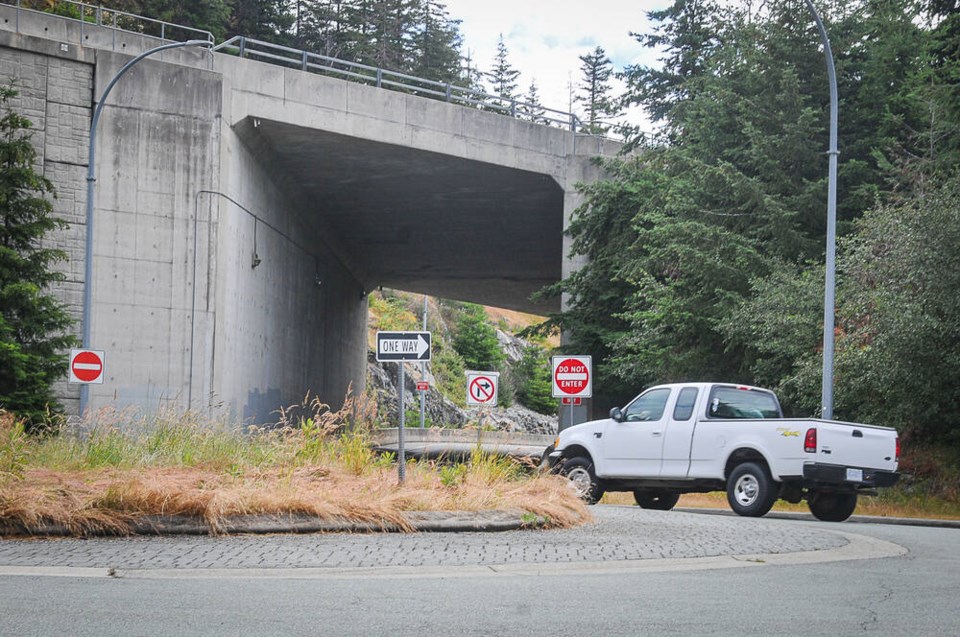I was driving home from the airport two weeks ago late at night on a quiet Upper Levels Highway, and I could see in the distance a vehicle with what seemed to be exceptionally bright headlights.
A couple of seconds later, though, I realized they weren’t just bright headlights – they were closing-in headlights. The vehicle was in the other westbound lane, driving eastward toward me.
I have to guess that I was the only other vehicle the wrong-way driver had seen since entering the highway incorrectly and dangerously, because once we were past each other, I saw that vehicle turn around and appear to pull over to the shoulder. I phoned police just the same. They weren’t able to track the vehicle down, in part because my description was far from helpful and thorough, but thankfully there was no apparent damage done.
Of course, last week there was a quite different outcome. A very serious and tragic accident occurred within a few hundred metres from where I’d encountered a wayward driver. The nighttime crash June 26 killed two and injured three in a head-on collision just west of Westport Road, Exit 4 from the highway, the exit I use. We are still awaiting details – Canadian policing is, frustratingly at times, far slower in how it informs the public than it is in America. We learn what, but it takes time to know why.
But this was not the first crash of similar circumstance. A 2022 collision in West Vancouver involved a camper van heading east in westbound traffic near Exit 8 at Cypress Bowl Rd. Six were injured, some seriously.
I drive that highway stretch pretty much daily, and for the most part it features standard on- and off-ramps. But Exit 4 has its westbound on-ramp and westbound off-ramp side-by-side. It would not be difficult to confuse them if you weren’t familiar with them, or if you were tired, distracted – or worse, intoxicated or stoned. A professional driver told me he finds the entrance from 22nd in West Vancouver is also fraught.
Which gets me wondering about whether we need to do something more to save us from ourselves.
We are some years from all of us having smart vehicles to keep us from on-ramping into the off-ramp. But technology has advanced to the point where many of those static, reflective signs – and particularly those scrawny Do Not Enter ones – can do with a significant make-over.
At the risk of sounding stereotypically like the senior I am, the North Shore and certainly places like West Vancouver have a disproportionate number of elderly drivers. They – OK, we – would benefit from a louder, clearer set of accident-averting notices.
There is no shortage of options.
The most routine ones are adaptive signs to provide drivers with updated information and warnings based on traffic conditions, weather or incidents. (We can do better than that sign telling us about the delays on the Lion’s Gate Bridge, although I am regularly grateful for what it provides.)
Radar- or camera-based systems can detect vehicles and warn drivers. Improved lighting on signs at night can contribute to better visibility. There are dynamic LED signs that flash, illuminate or change colour from green to red when a vehicle is detected approaching from the wrong direction.
Quite valuable for the investment are the LED-embedded pavement markers that are activated by a wrong-way vehicle and flash red. There are other detection sensors at highway entrances and exits that identify wrong-way vehicles and prompt alarms or alerts.
Automated gates that close automatically and physically prevent entry when a wrong-way vehicle is detected, or spike strips that allow drivers to exit but not enter the highway in the wrong direction, are more aggressive solutions.
If it is impractical financially to monitor entrances and exits, at the very least bigger and brighter “Wrong Way” and “Do Not Enter” signs, illuminated in multiple languages, fit the profile of the North Shore driving public.
True, these come with no small expense. No one loves paying taxes, but on this one I’d vote to spend.
Kirk LaPointe is a West Vancouver columnist with an extensive background in journalism. His column on North Shore issues runs bi-weekly.




